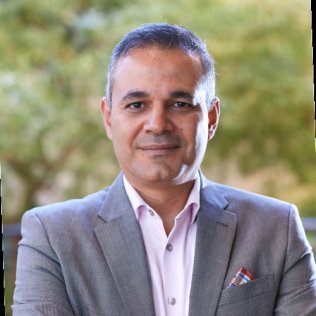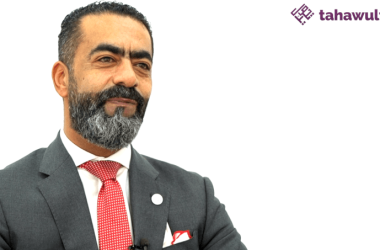Veronica Martin caught up with Fady Iskander, Vice President, Regional Sales Emerging Markets at Forcepoint, to discuss GITEX 2022 and the company’s plans for the region.

Can you tell our readers about some of the solutions and partnerships during GITEX this year?
This year we are deploying our mission statement, which is security simplified. Our job is to make sure that cyber security is not complicated. You can go around the stand and you see more than 200 security providers. In Forcepoint, we’re trying to bring this into one platform and what we believe that will make security simplified is zero trust. We’re moving from what we call explicit trust or implicit trust to zero-trust. This concept has been there for a long time but has moved with us now on the cyber space and we are declaring that we don’t trust people and data to come into our environment or leave our environment without inspection, so we are deploying our zero-trust technology and we’re bringing this under one platform called Forcepoint ONE. We have launched this platform in February, and we are deploying it for our region during GITEX.
In the last 12 months, how has your company performed in the MENA market? Has your company ventured into any new markets/countries?
From Dubai we manage a region called ‘emerging’ which covers the Middle East and Africa. The MENA region is the growth engine for the company worldwide. During 2022, we have established our regional office in Saudi Arabia and it will be operational from January next year. Besides, we have opened a data centre in Saudi Arabia for our solutions. Our customers in Saudi can have great quality of service while maintaining the sovereignty of data and data governance according to the local regulations. We are also expanding in East Africa, specifically in Kenya. We have multiple resources that were hired to cover West Africa and we are restructuring our team in South Africa as well.
Which technologies and IT trends are the forefront of driving innovation for your business?
There are multiple trends that are driving innovation. The whole movement from working in the office to remote or hybrid and anything in between has definitely pushed the boundaries of organizations. The data now is not residing in my data centre and within my network, but floating everywhere. This was a foreign concept for so many organizations and specifically highly regulated sectors, such as the banking industry, the government or public sector. The pandemic forced people to work remotely and, with this transformation, we needed to cater for the data to leave, but while the data is leaving, we need to secure it and make sure that it’s going to the right user and for a specific use, so it cannot leak or get lost. Hybrid and remote working have created for us a whole wave of demand in order to secure not only the parameter, but also the whole world.
The threat landscape is increasing and there are new attacks that we’re witnessing. Some of the most creative attacks that we’ve seen recently is leaking data through hiding it in photos. For example, you take an Excel file with the names of your employees, their salaries and IDs, and you encrypt it within a picture. When you send the jpg, you can even upload it to your social media and through specific tools, you can download this picture and separate the Excel file from the picture.
So, what’s happening is that traditional tools are not able to detect that the data is leaking and that’s why we moved to zero-trust. We have a technology called CDR that it’s basically ‘Content Deconstruct and Reconstruct’, where we take a file, strip it down, sanitize it from anything that could have been attached to it, and then rebuild it again and send it out. In the cyberspace, you cannot trust unless you can verify it 100%.
What do you think it makes you different from other companies?
We have been around for more than 20 years and have built expertise around data leakage and how we can secure the web. Our legacy solution was securing mail, but now we’re seeing the new wave of cloud: cloud adoption, migration and digital transformation. We acquired three companies last year in order to bring the cloud words to the on-prem words, marry them together and produce data on our Forcepoint ONE platform.
This technology can help you cater for OnPrem, hybrid and the cloud. Most of our competitors are either born in the cloud, young companies who come from the cloud era, and they are talking cloud only, or some old companies who have a very strong on-prem. We have achieved the connection between the three phases, so we can protect you on-prem, in a hybrid environment and in the cloud. We can do this through one policy and one management platform. Imagine that you have multiple bank accounts and several bills that you need to pay. You have only one app to move money from this bank account to this specific utility bill, but you can manage it all from one location. This is what makes us unique.





